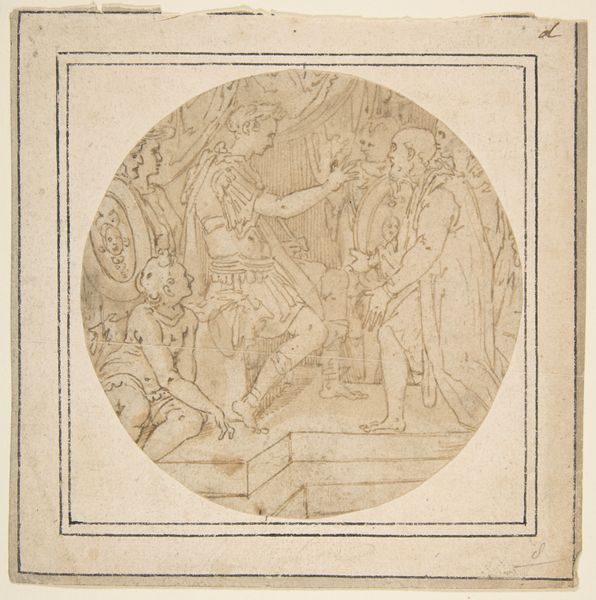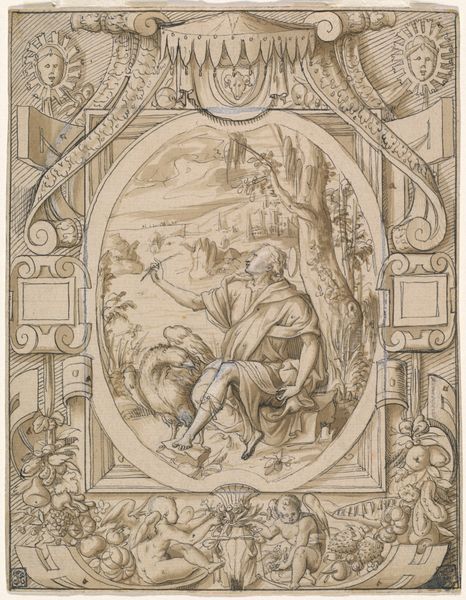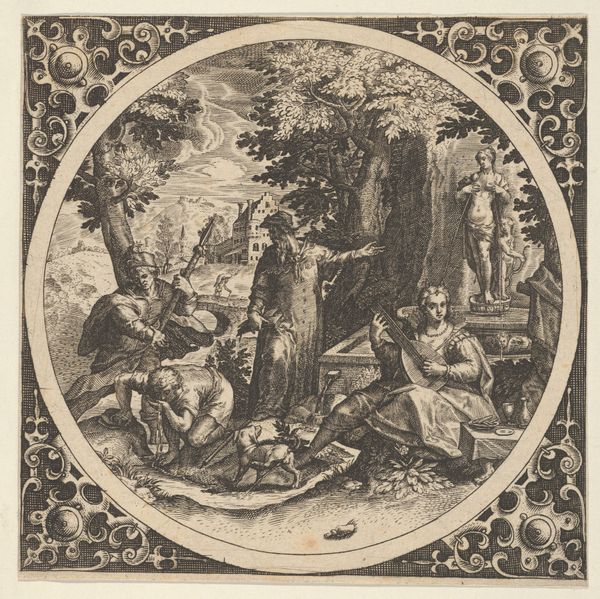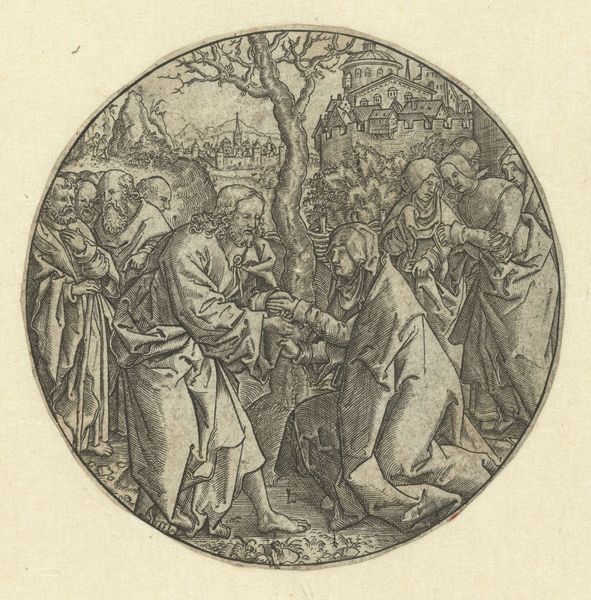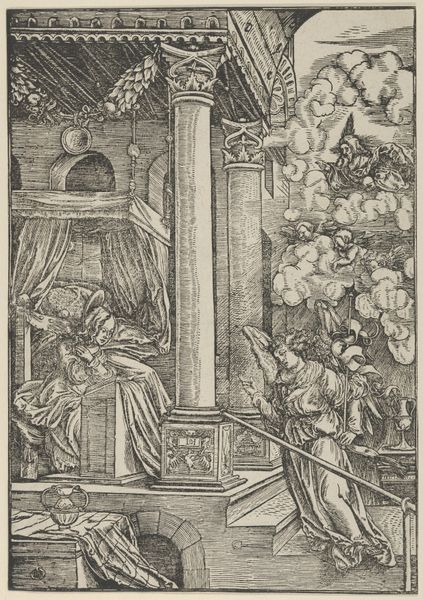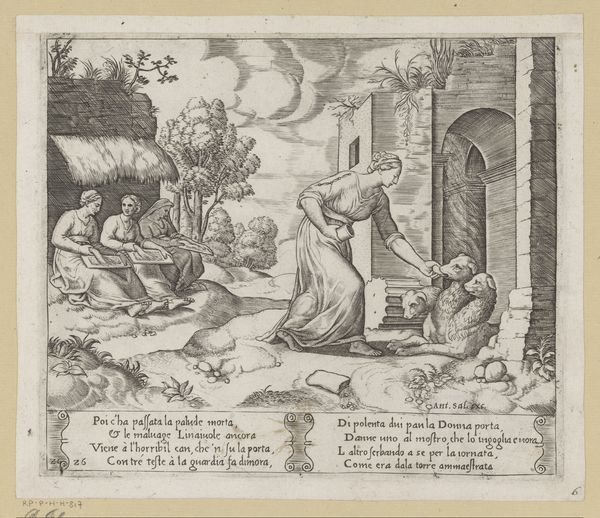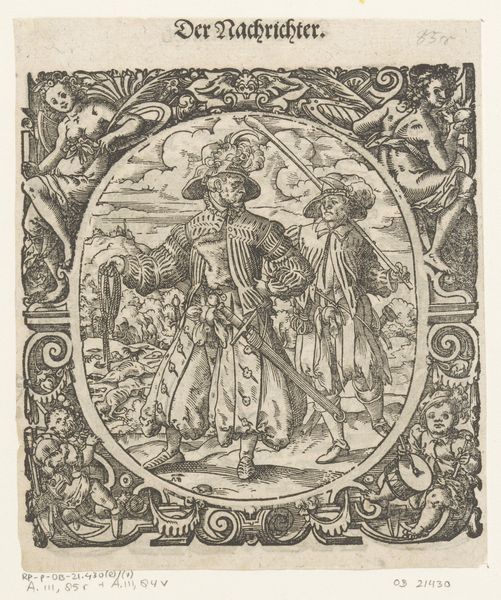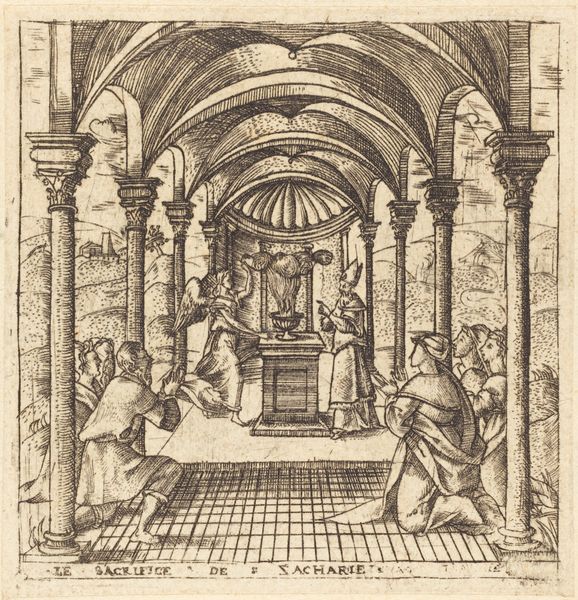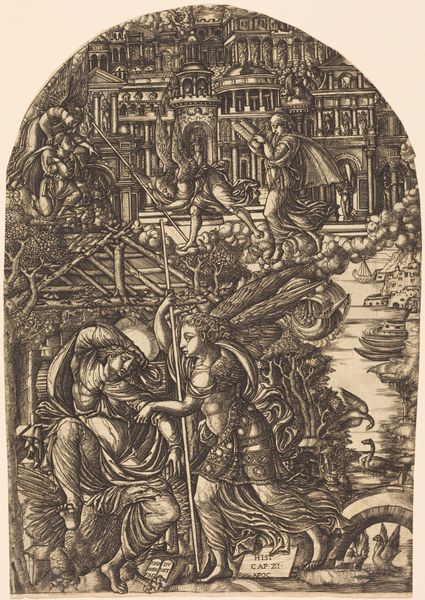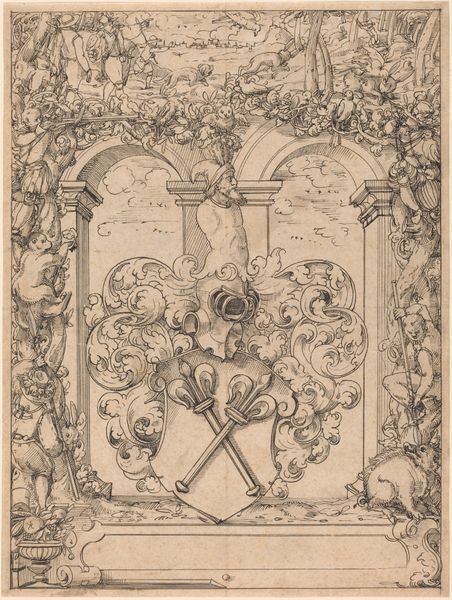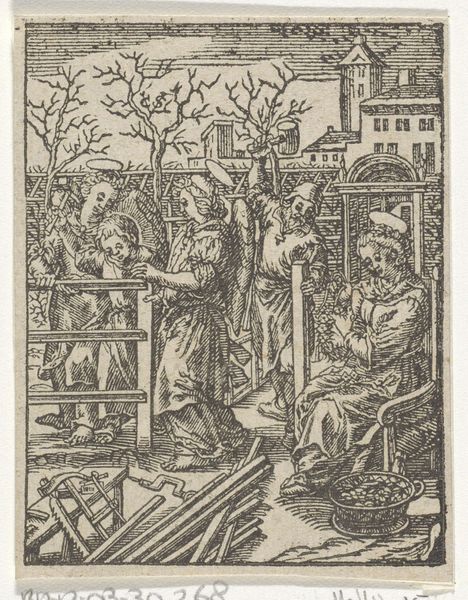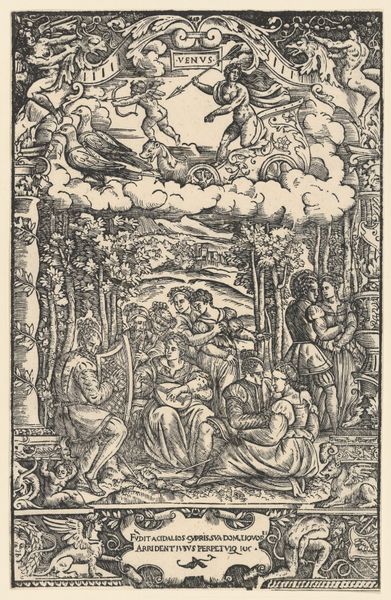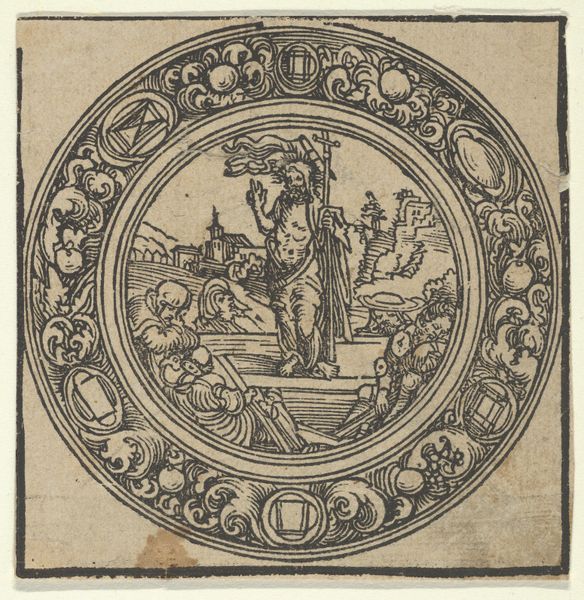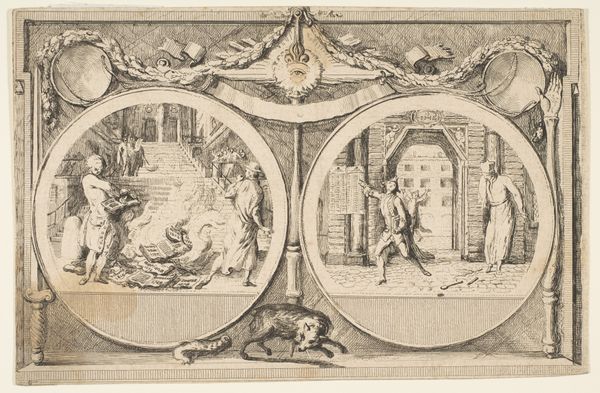
drawing, print, engraving
#
drawing
#
allegory
# print
#
figuration
#
form
#
history-painting
#
italian-renaissance
#
nude
#
engraving
Dimensions: sheet: 9.6 x 9.7 cm (3 3/4 x 3 13/16 in.) support: 10 x 10.1 cm (3 15/16 x 4 in.)
Copyright: National Gallery of Art: CC0 1.0
Curator: Today, we're looking at "David and Bathsheba," an engraving by Virgil Solis dating from between 1540 and 1550. Editor: Right off the bat, I'm struck by the composition—it feels like a divided stage, the architectural drama on one side, and the softer, more vulnerable figures on the other. The lines, while precise, give it an almost dreamlike quality. Curator: Absolutely. This piece sits within a complex historical context. The story of David and Bathsheba, pulled from the Second Book of Samuel, has often been used to explore themes of power, desire, and morality. Solis, working during the Renaissance, engages with a tradition of representing biblical narratives in ways that also speak to contemporary social and political concerns. Editor: And you can almost feel that tension. David, perched in his tower, looks… well, predatory isn't too strong a word. It's all happening under this sky. It feels almost complicit, even heavenly and holy but also silent, judging... Or perhaps the sky simply doesn't care. I wonder... Curator: I think "predatory" hits the nail on the head. The gaze, of course, is key. David's gaze initiates the drama, underscoring the power dynamics at play. But consider, too, how Bathsheba is positioned within the frame. She's observed, exposed, her vulnerability laid bare. This artwork certainly prompts discussions around gender and the objectification of the female form. Editor: Precisely. Though it isn't always easy when you look at these engravings in the cold light of now; seeing figures like that often leaves you feeling almost voyeuristic. But there is a starkness about how it is rendered, with all these bare surfaces contrasted against such intense, charged emotions. The clean lines, as simple as they may seem, are working hard, you know? The Renaissance clarity almost intensifies the awkwardness. Curator: That tension between clarity and complexity is central to the piece’s lasting power. By understanding the social history that informs these archetypes, and the questions it poses, perhaps that discomfort you are experiencing invites us to confront not just this artwork's historical narrative, but broader contemporary issues that implicate these themes. Editor: Exactly. You get so many layers from just one snapshot here, centuries away. But yeah, powerful, and definitely uncomfortable in the best possible way. A lot more raw than I thought! Curator: Indeed, it provides insight into the timeless struggle between individual action, accountability, and cultural expectations. It’s something that still clearly resonates centuries later.
Comments
No comments
Be the first to comment and join the conversation on the ultimate creative platform.
